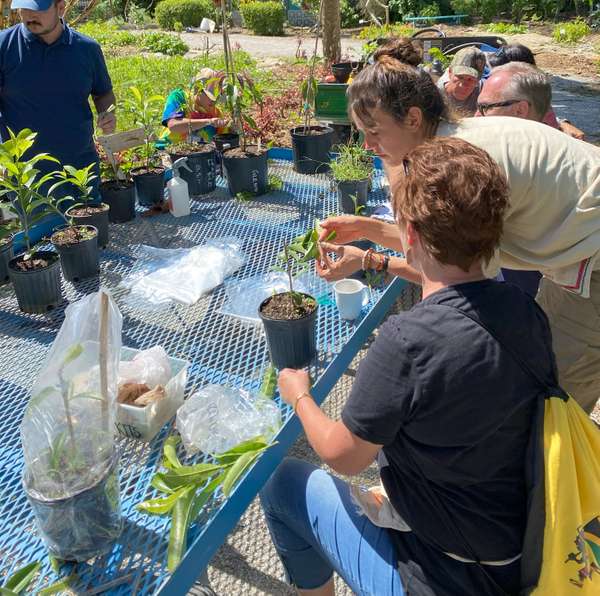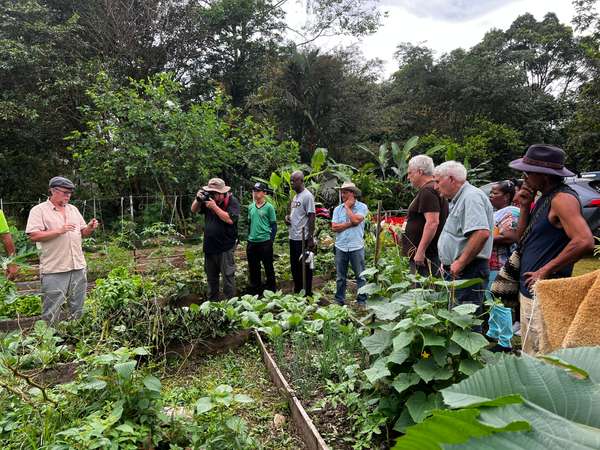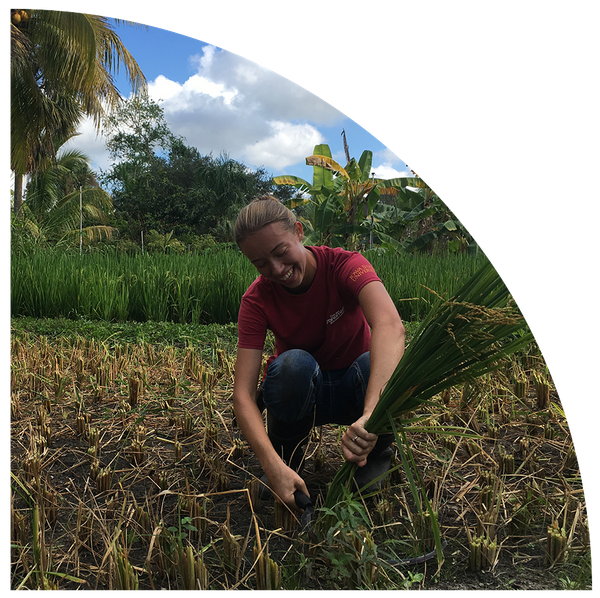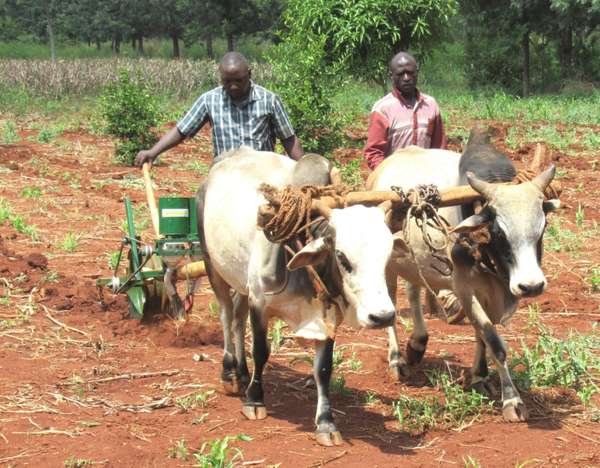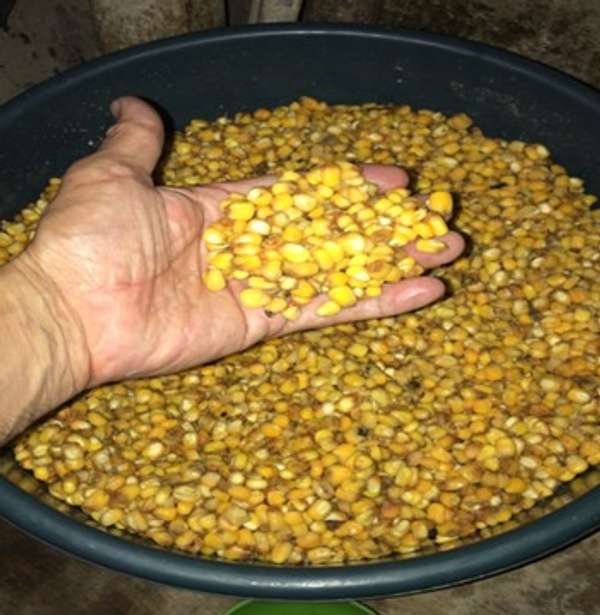ECHOcommunity Updates
Don't miss out! Post-Conference Workshops Friday, November 15th 2024-11-02
Friday, November 15th | North Fort Myers, FL
Don't miss out on practical hands-on training the day after the ECHO International Agriculture Conference on the Research and Demonstration Farm. This year, ECHO North America is offering 3 different Post-Conference workshops:
- Cultivate Abundance, Mision Peniel, & ECHO grow, collect, & share nutritious, culturally preferred food for the Immokalee farm worker community. Participants will visit Mision Peniel to see the garden and preparations that go into serving their community.
- The Propagation post-conference workshop will cover topics such as nursery management skills, creating potting mixes, & propagation methods (seed germination, cuttings, division, air layering & grafting). Participants will get hands-on experience grafting.
- Earthen construction holds many advantages over conventional building methods: fire resistance, temperature control, and minimal impact on the environment. A critical advantage is the low cost! This post-conference workshop will cover theory, design, and hands-on practice.
Transportation to/from Hotel and lunch are included.
Scroll down to "Add-on" and select the specific Post-Conference Workshop you'd like to attend!
Add on a Post-Conference Workshop to your Registration!
SIFAT Training 2024-11-02
From September 20-26, Servants In Faith and Technology (SIFAT; sifat.org/) held a Food Security and Agroecology training at their demonstration farm in La Tigra, San Carlos, Costa Rica. Participants from Honduras, Guatemala, Nicaragua, Costa Rica, and Haiti started each day with prayer and meditation together. Themes of community development included practical on-farm trainings and visits.
Typical agroecological practices on the SIFAT demonstration farm showcased biological agents for pest control and soil improvement like “mountain microorganisms” and biochar. On-farm experimentation by the National Agricultural University of Honduras showed the practical implementation of these practices while characterizing their role in the agroecology of local farms.
Reforestation and nursery management training, with multi-generations taking part in the Ecological Grandmother program showed effective and inclusive tree planting in Costa Rica.This program [http://edn.link/9h4drt] showed the importance of all generations working together. Small-scale farm entrepreneurship highlighted concerns of successful women’s cooperatives and family enterprises as well as environmental education. The Costa Rican Ministry of Agriculture reminded attendees of the positive role governments play with the environment and peace as priorities. Special presentations from Nicaragua “Development is from the Heart” and the experiences from SIFAT Haiti encouraged participants. The content of the event covered not only organic agricultural production but also simple nutritional responses to hunger through workshops on leafy greens such as a class on preparing Brazilian spinach.
SIFAT is building an Appropriate Technology center to expand training in Latin America and the Caribbean. It was a rewarding time of fellowship, prayer, and belonging to a diverse group of people, while always remembering the 13,400 children under five who die daily of hunger-related causes (UNIGME, 2024).
Reference
United Nations Inter-agency Group for Child Mortality. 2024. Estimation (UNIGME), Levels & Trends in Child Mortality: Report 2023. United Nations Children’s Fund. New York, USA.
ECHO South Asia Commencement Event in India 2024-10-29
November 1, 2024 | 5-9 PM
Heinz Auditorium, New Delhi
Please join us in celebrating the launch of ECHO South Asia! ECHO's new South Asia Regional Team is led by Gladstone Kumar. Gladstone is originally from southern India. Please join us if you are able at the Heinz Auditorium, YMCA in New Delhi. We hope to see you there!
2025-2026 Internship Application Now Open! 2024-10-22
ECHO North America is now accepting internship application for the 2025-2026 Internship Program!
- Applications open October 16, 2024
- Application due by January 20, 2025
- Interviews are conducted in January 2025
- Internships are assigned in February 2025
- Internship begins May 28, 2025
Internship Description
ECHO interns receive academic and hands-on training at ECHO's Small Farm Resource Center learning from experienced farm, seed bank, propagation, appropriate technology, animal specialist, and community development staff. At the end of this 11-month internship, interns will receive a certificate in Tropical Agriculture Development and gain valuable hands-on experience in growing tropical foods, creating trainings in agriculture or community development, harvesting, cleaning and processing seeds, supervising the work of local volunteers, learning to care for livestock, and maining various farming demonstrations.
Maresha Plow - ECHO Technical Note #102 Now Available 2024-10-15
ECHO's latest Technical Note is the owner's manual for the Maresha Plow! ECHO East Africa worked with Neil Rowe-Miller from 2018-2023 to develop and refine the Maresha plow, originally from Ethiopia, into a seeder for promotion of conservation agriculture in East Africa. This Technical Note includes details about the plow's benefits, parts, operation, calibration, trouble-shooting, maintenance, repairs, and economic considerations.
Download Technical Note 102: Maresha Plow
EXCERPT:
The maresha planter is fitted with two independent seed meters. Each of these meters has one compartment with large holes (flutes) and one compartment with small holes (flutes). Depending on which compartments you use, you can apply seed and fertilizer at the same time, or you can plant two different types of seed in alternating rows. Large flutes are used for large-seeded crops (maize, beans, groundnuts, etc.). Small flutes are used for fertilizer or small-seeded crops (sorghum, millet, small-seeded cowpea, etc.).
Speaker Highlight: Robert Morris/Registration Closing Soon 2024-10-08
Robert Morris
Senior Manager for Program Innovation, HOPE International
Robert Morris serves as the Senior Manager for Program Innovation at HOPE International. In his role, he works alongside their global team to develop creative strategies and solutions to pressing and complex challenges in their network. In 2020, Robert led the launch of HOPE International’s first regenerative agricultural trainings through savings groups and since then, more than 25,000 farmers in 6 countries have been trained to apply regenerative farming principles alongside saving and borrowing from their groups. Robert is passionate about the intersection of faith, business, and development work and how we can harness agriculture as a tool to share the Gospel.
Presentation Title: Growing your garden together: How savings and agriculture can combine to multiply impact
November 12-14 | Fort Myers, FL
Registration for conference closes October 19th!
Book your hotel room by October 18th for the group rate!
อาหารเสริมสำหรับโคนมที่ได้จากเปลือกหุ้มผลชั้นในของเมล็ดกาแฟ 2024-10-03
บทความนี้เป็นการสรุปการวิจัยที่จัดทำโดยเจ้าหน้าทีเอคโค่ เอเชีย ที่ฟาร์มโคนม MMM การวิจัยมีจุดมุ่งหมายเพื่อใช้เปลือกหุ้มผลชั้นในของเมล็ดกาแฟที่ได้มาโดยไม่ต้องเสียค่าใช้จ่ายมาทดแทนกากใยที่ต้องซื้อมาเป็นส่วนประกอบในอาหารโคนม รวมถึงเพื่อประเมินผลที่ได้ต่อการผลิตน้ำนม
ขั้นตอนสุดท้ายในการแปรรูปเมล็ดกาแฟดิบ (Coffea arabica) คือการกำจัดเปลือกที่เป็นผนังผลชั้นในของเมล็ดกาแฟ ซึ่งมักเรียกกันว่า "กะลา" ศูนย์แปรรูปกาแฟต่างๆจะทำการกำจัดเปลือกชั้นในออกก่อนที่จะขนส่งหรือก่อนการคั่วเมล็ดกาแฟ ทำให้มีของเสียที่ไม่ต้องการสะสมอยู่ วิธีการกำจัดเปลือกชั้นในได้แก่ การเผาหรือทิ้งไว้เป็นกองเพื่อให้ย่อยสลาย ซึ่งทั้งสองวิธีนี้อาจเป็นอันตรายต่อสิ่งแวดล้อมได้หากมีในปริมาณมาก
EDN #166 Now Available 2024-10-01
In this issue
- Nixtamalization
- Echoes from our Network: SIFAT Training and Inga Alley Cropping
- From ECHO's Seed Banks: Grain Amaranth
- Books, Websites, and Other Resources: Resilient Agriculture Toolkit
Nixtamalization
Robert Walle
Excerpt:
The high pH of lime and other alkaline compounds breaks down the seed hull and pericarp in grain, changing the starchy endosperm of the maize grains and helping to “pre-digest” nutrients, making them more available during digestion. Changes in the starchy endosperm make the dough, often called masa, easier to roll in making tortillas. A tortilla should be easy to fold and roll, and not split when eaten or filled.
ECHO Now Hiring: Central America & Caribbean Regional Impact Center Director 2024-09-24
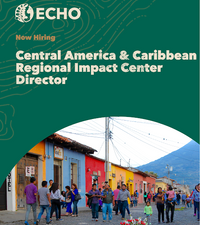 ECHO is excited to annouce that we are seeking to hire a Director for our Regional Impact Center (RIC) for Central America and the Caribbean (CAC). This RIC aims to strengthen the capacity of a diverse regional network to defeat hunger and improve lives through sustainable food and agroecosystem strategies. The objectives outlined in a prospectus, job description, and strategic framework for the region were developed in response to the unique needs of small-scale farmers in a region characterized by rapidly changing economic and environmental contexts. Essential duties and responsibilities of the postion include: developing partnerships, overseeing training events and technical support to CAC network members, ensuring follow-up to training events and monitoring, eevaluation, and learning, coordinating communication, and modeling servant leadership.
ECHO is excited to annouce that we are seeking to hire a Director for our Regional Impact Center (RIC) for Central America and the Caribbean (CAC). This RIC aims to strengthen the capacity of a diverse regional network to defeat hunger and improve lives through sustainable food and agroecosystem strategies. The objectives outlined in a prospectus, job description, and strategic framework for the region were developed in response to the unique needs of small-scale farmers in a region characterized by rapidly changing economic and environmental contexts. Essential duties and responsibilities of the postion include: developing partnerships, overseeing training events and technical support to CAC network members, ensuring follow-up to training events and monitoring, eevaluation, and learning, coordinating communication, and modeling servant leadership.
Job Description and Application
Responsabilidades esenciales y Aplicar
Speaker Highlight: Dr. Katrina Koehler 2024-09-17
Dr. Katrina Koehler
Professor & Researcher, Houghton University/ Los Alamos National Laboratory
Katrina Koehler received her PhD and MA in physics from Western Michigan University and did her undergraduate studies in mathematics and physics at Houghton University. She teaches physics, programming, and data science classes at Houghton University in Houghton, NY during the academic year and conducts research in nuclear safeguards at Los Alamos National Laboratory in Los Alamos, NM. She has a passion for reaching the unreached people groups and has adopted the Tamajeq as her primary focus.
Presentation Title: A Data-Driven Approach to the Great Commission.
